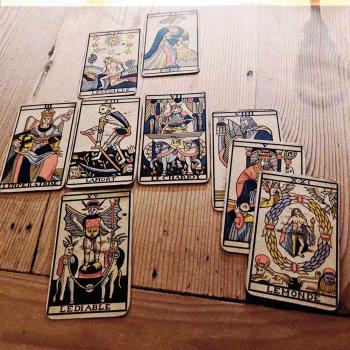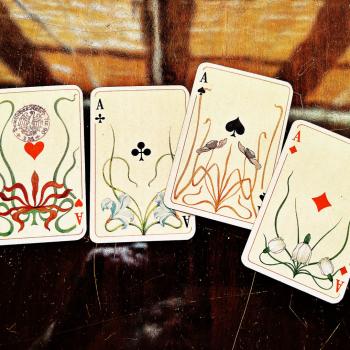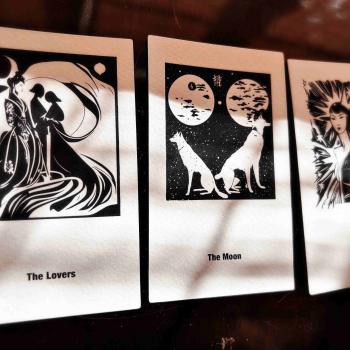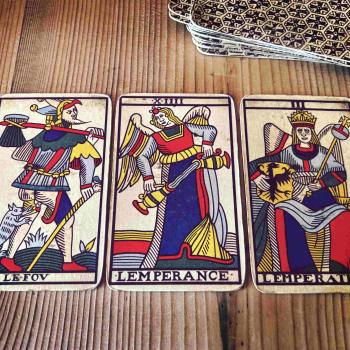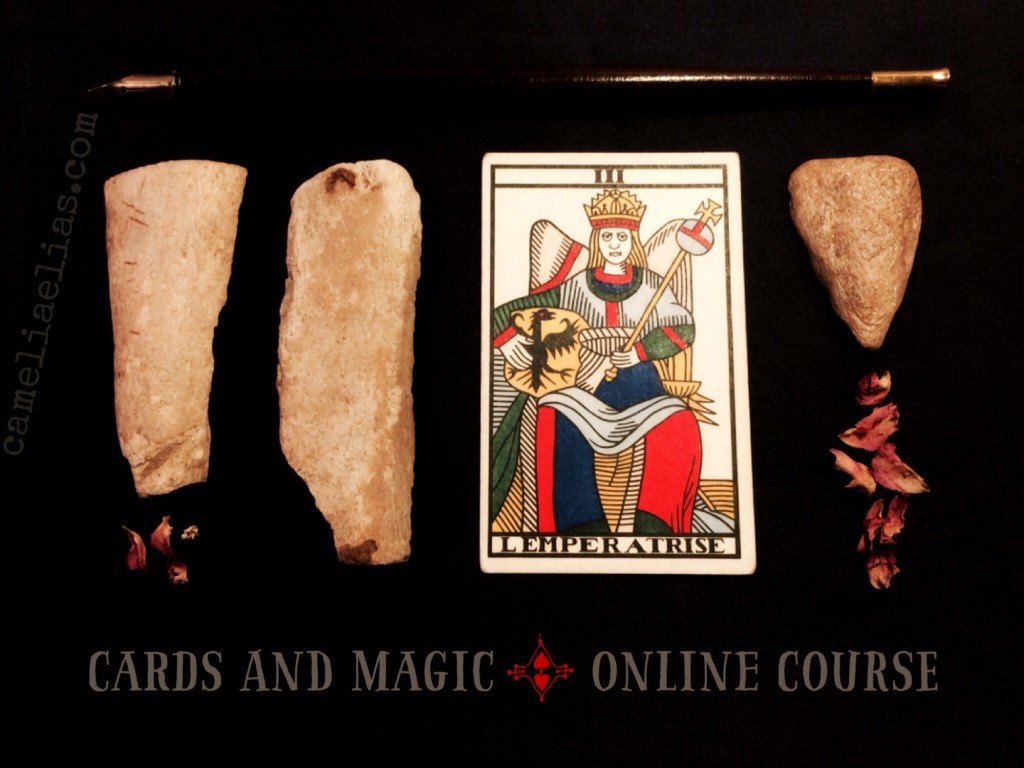
This past week I’ve had the immense pleasure of seeing cards combine with magic. Better yet, I’ve had the pleasure of seeing cards as magic.
On December 1st I launched a call to register for my new online course in Cards and Magic. When the registration closed last night, I realized that this process has taught me a valuable lesson about the magical community, which in my case has turned out to be exactly that, magical. Please note that I didn’t say ‘cartomantic community’. Let me explain:
Halfway through the launching process, around the time 80 people registered, I noticed this: the number of men equaled the number of women. This equality has been maintained all the way through to closing time, into what I now call the 3-digit legion.
Another thing I’ve noticed is that most of the people who have registered for the course are not just card readers, but rather witches, witch herbalists, sorcerers, talismanic jewellers, non-dualist and tantric Buddhists, high ceremonial magicians, Druids, plastic artists, and visionaries – who just happen to also read the cards or perform other types of divination.
As most of us know, given the cultural stereotypes, cartomancy has been mainly dominated by women who usually stick to the art of reading cards and not so much to the art of reading cards and then doing something else on the side, something we often associate with low magic, or the magic embodied by potion makers, poisoners, and paupers.
So what happened? Who is this large group, heterogeneous and across magical arts and disciplines, ready to hear about Cards and Magic? Why have people gathered here so massively?
Old School Cartomancy
Going through the large numbers of enthusiastic testimonials, it has quickly become very clear to me that what people are seeking is old school cartomancy, or the kind of cartomancy that we associate precisely with magic, high and low, flow and connectivity, sharp insight and fearlessness, power and wisdom.
Since the 60s, spiritually inclined folks have stressed the importance of doing work on the self. This is all cool, but since we can see that many are currently tired of the kind of personal and spiritual development that only leads to knowing the self, we can conclude that something vital is missing. Here’s what I think: Knowing yourself is not very interesting if it stops there, in self-knowledge. What is infinitely more interesting is the knowledge of your place. Knowing your place gives you access to the connective flow where magic happens all the time, and not just some of the time.
The type of cartomancy that I have been advocating for, which people have gradually recognized as valuable, is a cartomancy that takes risks; a cartomancy that is nonjudgmental; a cartomancy that is not concerned with morals, before it is concerned with usefulness; a cartomancy that is not concerned with ethics, before it is concerned with results; a cartomancy that sends people out to the cemetery to strengthen their sense of connection, before it is concerned with dismissing superstition.
Old school cartomancy is not concerned with work on the self only so that the result is advanced navel gazing. Old school cartomancy emphasizes the many over the one. In this emphasis we find a constant reminder that if we work on ourselves we do so because we want to know what we are really good at, so we can serve better. Psychological tarot à la the 60s, for all its valuable insights, has somehow missed this point: the point of what connects the self with servitude.
Magicians, sorcerers, and witches know all about servitude. What do you think all that altar tending is all about? All that devotion to spirit? All that commitment to a mundane acceptance of all that is? Magicians, sorcerers, and witches tend to consciously pour mojo into the magical web of flow, because they know that the more mojo of their own they contribute, the more mojo comes back to them.
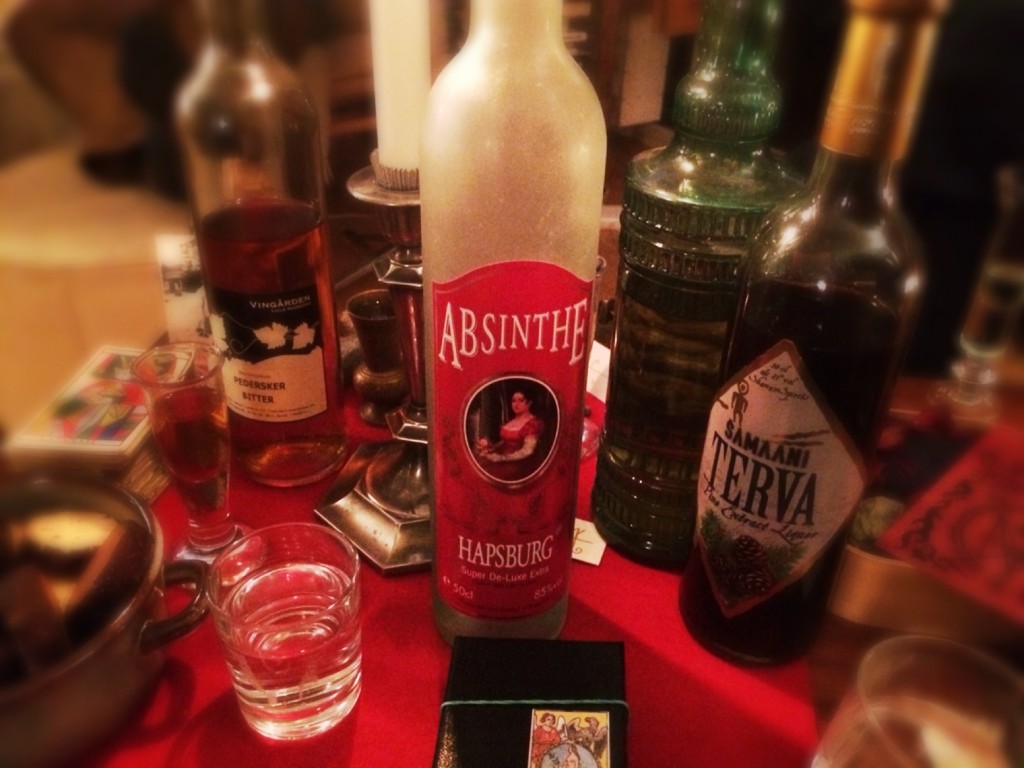
Seeing More and Acting Better
I have already kicked off my course with this principle: Seeing more and acting better, because I realized that I’m fortunate to have been given the grand privilege to lead a group of people who aim to do work with the cards that is anchored in the experience of the cards, rather than anything else.
I like it very much that the group gathering around Cards and Magic is a group that’s made up of people who have the sorcerer’s mindset: Rise above, observe, and kick yourself into magical action without doubts. As far as I’m concerned, what makes a successful card reader is precisely the ability to rise above the self and all its fears and desires. The successful card reader is interested in developing the penetrating gaze. Good card readers are penetrators by definition. They pursue the truth relentlessly, because, indeed, it is true what they say: truth sets you free.
Experiencing the Cards
In my work with the cards I invite people to consider to what extent they can permit themselves to allow the cards to smash their blocks, self-doubt, boredom, and general disbelief. Can you see the cards turn you into a poet? If not, why not? What’s holding you back? Can you see your cards perform magic for you? If not, why not? What’s holding you back? Can you hear the cards whisper power words to you, full of mysterious sorcery and secrets? If not, why not? What’s holding you back?
This is what I mean by experiencing the cards: We let the cards embody our situations, rather than look at what set traditions they are associated with, or what system of correspondence they rule, or what symbolism and history they represent – however fascinating all of that is. We let them put us on a track where we play detectives. We let them charm us and enchant us. We let them open doors to things we don’t dare to dream of, or are afraid to realize are possible. Reading cards is like everyday magic when we allow ourselves to be close to nature and the nature of other human beings. Cards make us see things.
Celebrate the Magic
Last night legendary collector and good friend K. Frank Jensen visited. We drank a lot of witchy stuff, ate power food, and looked at secret cards. He asked me: “How many from the established Tarot community have joined your class?” “Not many,” I said, and I added: “I think it’s better to be both a cartomancer and a sorcerer, rather than ‘just’ a cartomancer. The Cards and Magic kind of person is the person who performs readings and magic from a non-dualist place, the place of flow and acceptance of all that IS and is beautiful.”

Frank gave me a set of beautiful cards as a gift, a facsimile he made himself of the original in his collection of Tarot Daïtyanus, by Ernest Kurtzahn (1920). This is a strange German deck that combines concrete imagery from Marseille, Etteilla, Colman-Smith, and Wirth. Very appropriate, given the tycoon power that the witches and the sorcerers joining me have lent to the group already, so I asked the cards this question:
How can we best experience the cards, beyond what we can reflect on through reason and emotion?
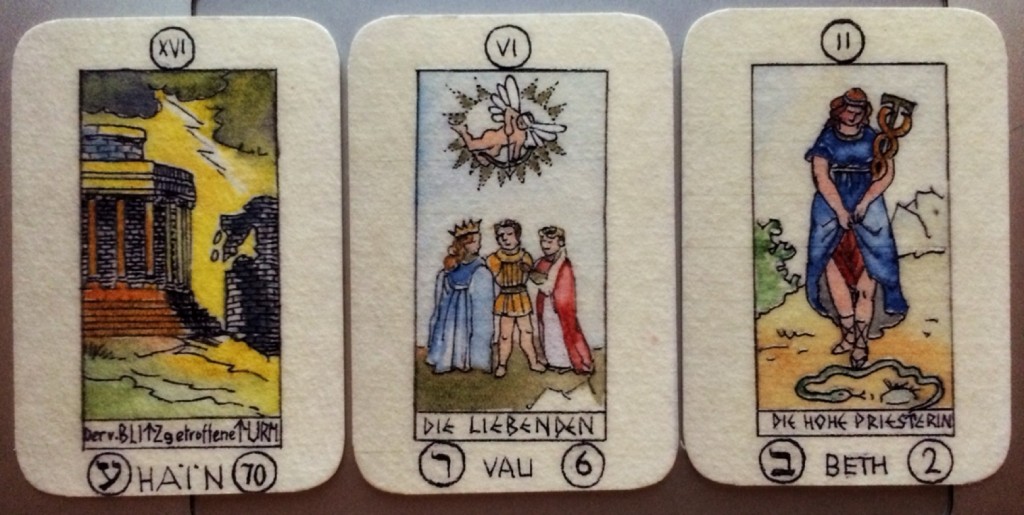
The cards said:
The Tower, The Lovers, The High Priestess
Indeed. What do we need culture clubs for? Straitjackets and dogma, or one set tradition? Off with its head. Experience is touching first, and then choosing. Responding first to the call of the heart, and then acting. What awaits our experience is the healing game, the healing snake, and standing tall in the mystery of silence.
§
If you missed joining Cards and Magic this time around, you may try The Oracle Travels Light: Principles of Magic with Cards. Some very cool stuff people have said about this one. Or join my newsletter to stay informed.

Patheos Pagan on Facebook.
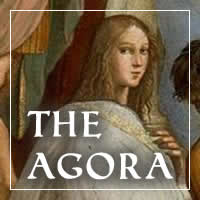
the Agora on Facebook
The Cartomancer is published bi-monthly on the second and fourth Wednesday here on the Agora. Subscribe via RSS or e-mail!
Please use the links to the right to keep on top of activities here on the Agora as well as across the entire Patheos Pagan channel.






